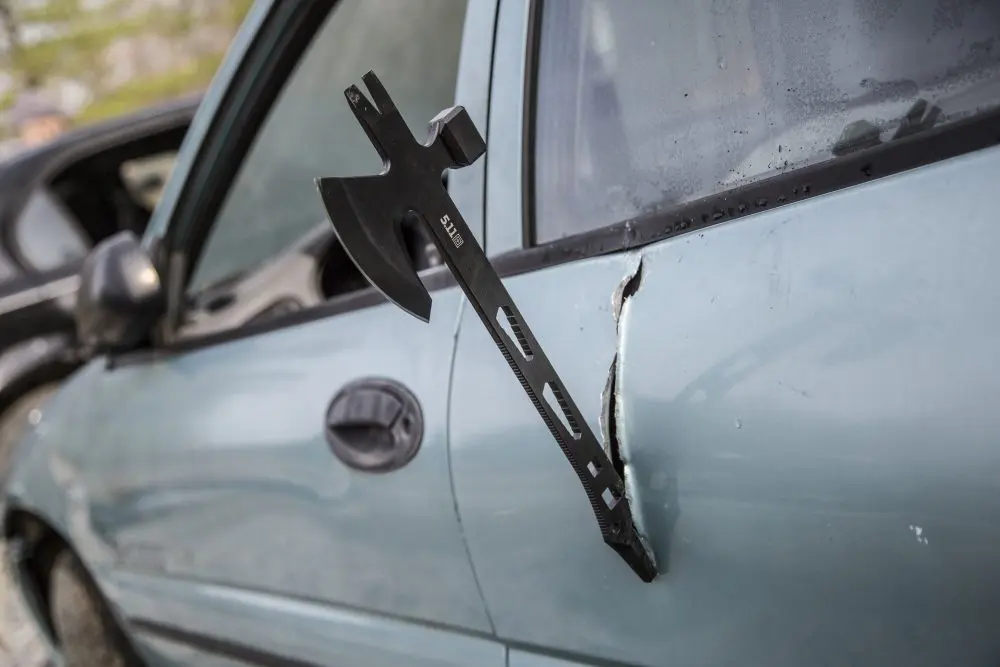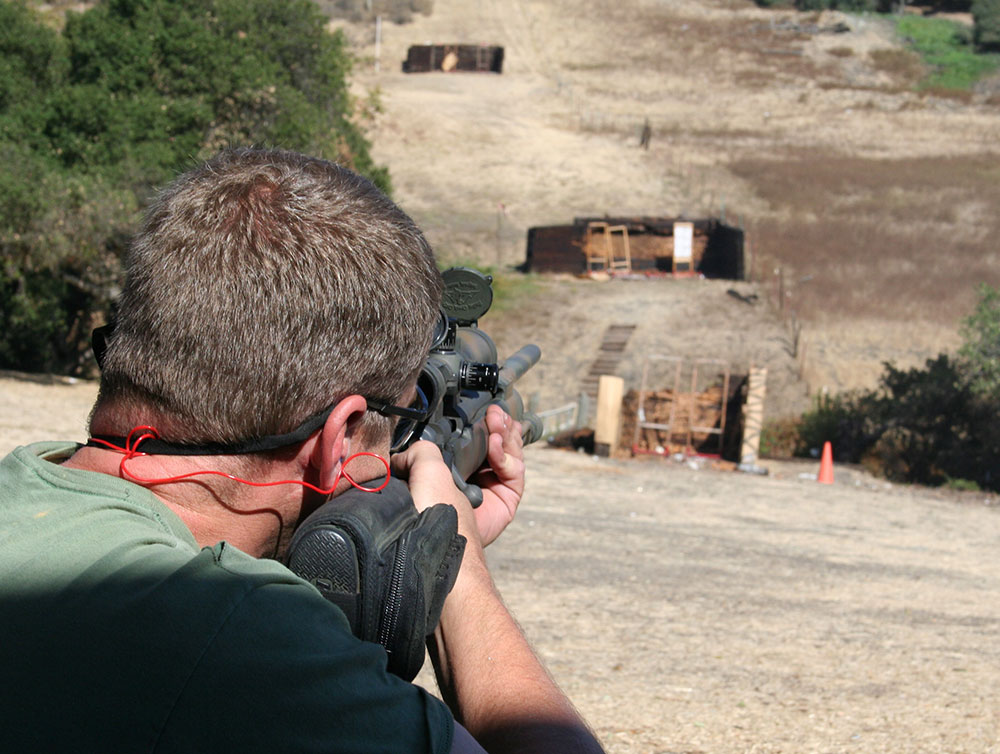
I respect guys who know a lot about cars. Unfortunately, I’m not one of them. I know where the gas goes, what the long pedal on the right side of the floorboard does, and (unlike many people) how to operate my turn signals.
I rely on mechanics to keep my truck running. Every 3,000 miles or so, I visit one of those chain oil-changing places. Every time, it’s the same drill. The mechanic comes out and, in a monotone voice born out of saying the same thing over and over to customers, offers me various options. Flushing out radiator fluids, replacing transmission fluid, and replacing the air filter. Not knowing if I need them or not, I agree to fixing or replacing most everything.
Realistically, everything from tires to spark plugs needs to be maintained at some point. But replacing them before it’s required is a waste of money. Wait too long and your vehicle can break down. Routine maintenance is required by all things mechanical to ensure they function properly.
I know a lot more about guns than I do about cars. I’m very familiar with the inner workings of the weapons systems I train with, use at work, and carry off duty. I take the care and maintenance of these items very seriously, since my life can depend on them.
About me: I spent 13 years in the military, during which I learned the U.S. Army way to clean weapons. Strip it down to basic parts and clean it until it’s spotless. Then have an armorer look at it and have him hand it back to you because he says it’s still dirty. Take it apart and clean it again. Later in my Army career, I learned to wait until the arms room was getting ready to close and turn it in then. Even the most dedicated armorer doesn’t want to miss chow to re-inspect your weapon….
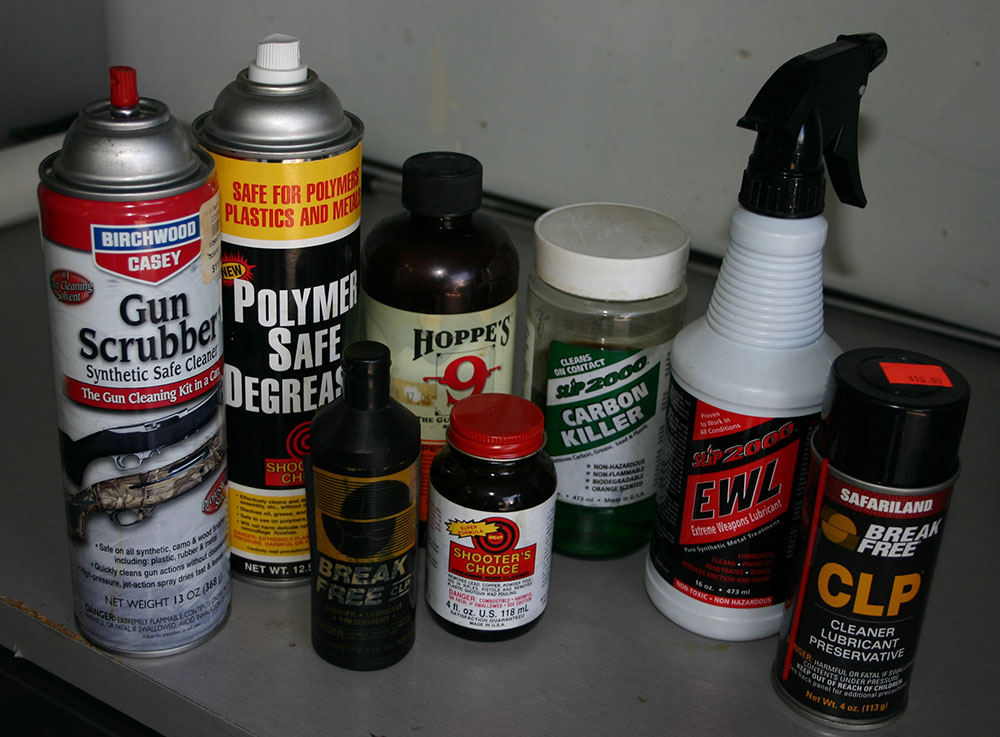
The military way is thorough but pretty much unnecessary. Like replacing your air filter every 3,000 miles, there’s no need to do it every time. Keeping with the car analogy, weapons maintenance should be scheduled maintenance, like 25,000-mile tune ups.
But instead of mileage, it should be based on round count, number of times the weapon has been used, the environments it’s been used in (e.g., desert, jungle), and where it’s been stored.
This is what works for me.
Table of Contents
THE HEAVY-DUTY CLEAN
This is for when you ride it hard and put it away wet, when you put hundreds or even thousands of rounds of cheap ammo through an AR over multiple range sessions, especially in bad weather or austere conditions such as deserts. This technique involves stripping the weapon of all debris, carbon, dirt, and lubricants. Yes, I said lubricants.
To accomplish this, I use a can of kerosene. I purchased an empty, unused paint can at a paint store, along with the kerosene. (Don’t be cheap and re-use an old paint can.) I pull the entire bolt from the AR and throw it in the can. I pour some kerosene down the barrel and put the upper receiver (minus the barrel) in the can too. I use a brush to scrub the trigger group with it. This removes almost all offending carbon and dirt. You’ll be amazed after you disassemble the bolt how easily the carbon comes off.
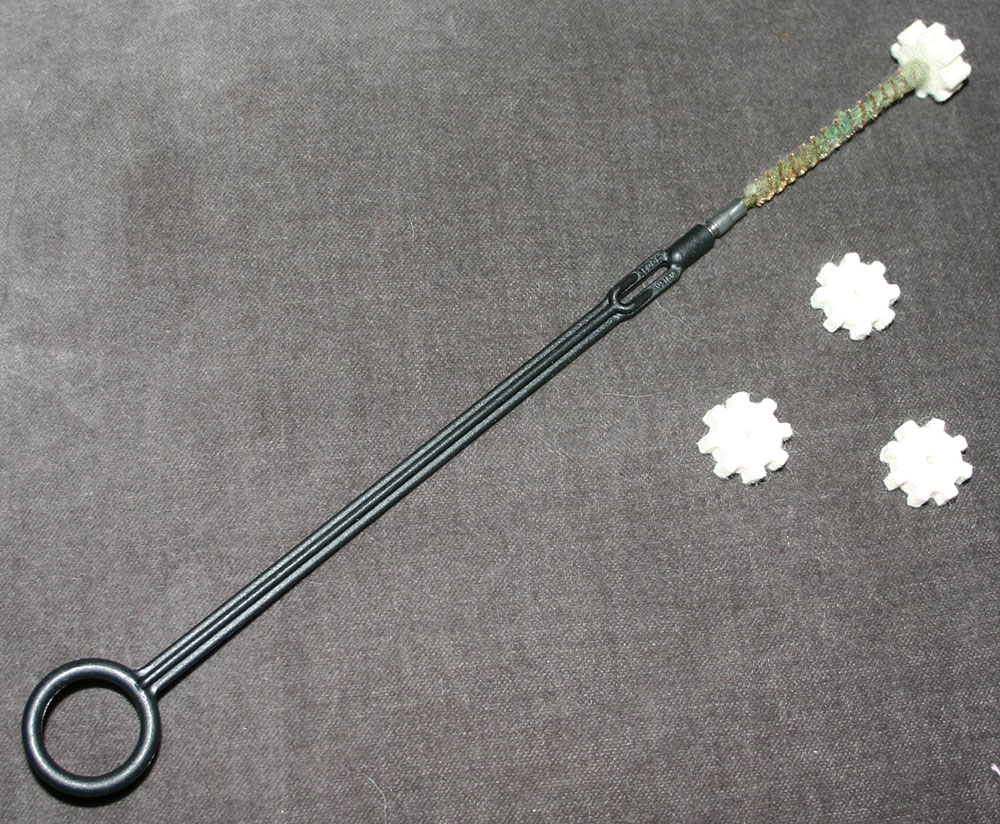
Here’s a bonus hack I’ll include, free of charge, for cleaning the star chamber of an AR, also known as the locking lug recess. Use one of the pads specifically designed for cleaning this area. They are made of cloth or synthetic material and are shaped like, you guessed it, a star chamber. Attach a thin wire barrel brush to a pistol cleaning rod, then screw the patch onto that. Dip it in kerosene or your favorite defouler and leave it in the chamber to soak into the carbon.
Free hack #2. Clean your gas tubes out periodically. The only consistent malfunction I ever had with an AR-15 came from a clogged gas tube. Extra-long pipe cleaners will do the trick.
Here’s the downside to the heavy-duty clean: The weapon will be completely void of lubricants. We’re talking bone dry, like your mother-in-law’s meatloaf.
After cleaning, heavy lubrication will be required on all metal surfaces. Heavier on the moving parts, lighter on the external parts. For the military guys, think a spray can of CLP on a machine-gun bolt.
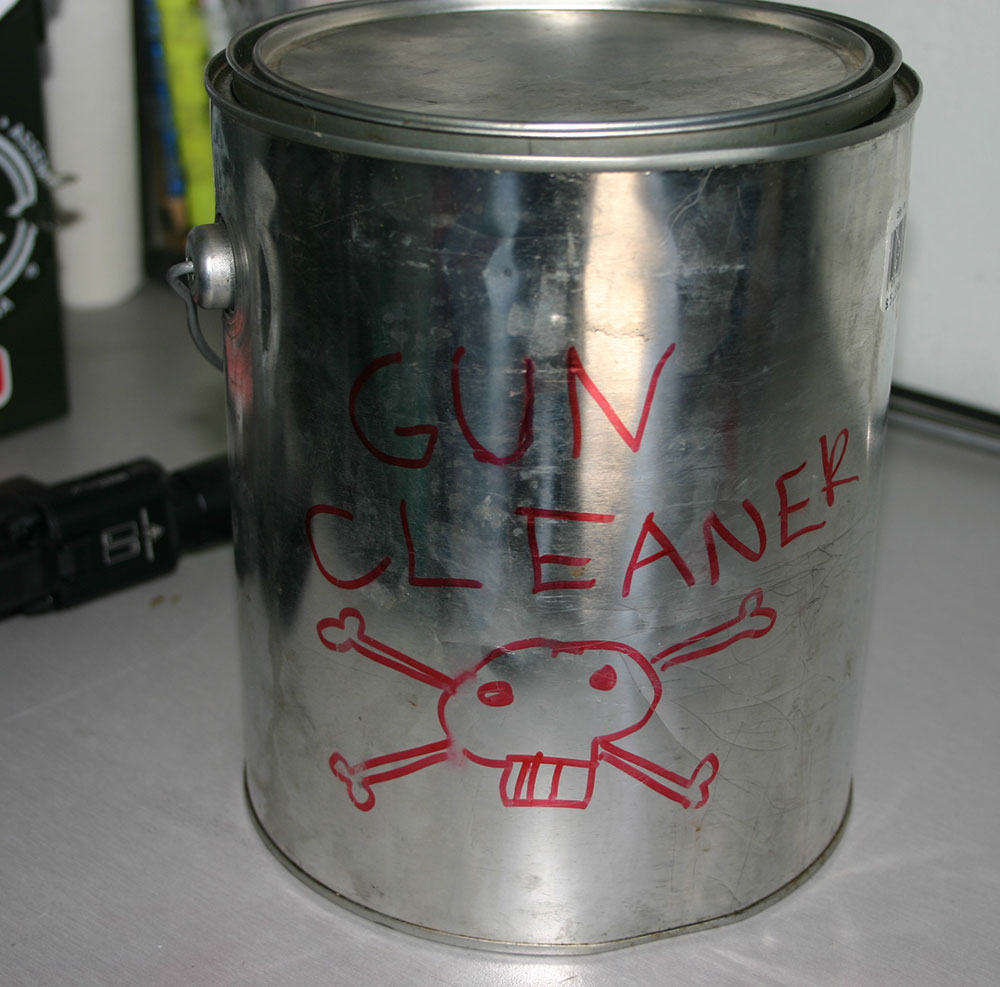
A note on lubricants. I understand some shooters’ reluctance to use a lot of lube on a firearm. It can collect and build up debris if the weapon isn’t properly maintained and inspected. But I lube all moving metal parts and add light oil to all other non-moving metal parts.
I do this for two reasons: First, it prevents rust. Ever notice how dry your weapons are after they have been stored in a safe for a while? I use a desiccant in my safe to keep the moisture out, but this tends to dry the weapon out as well. Second, it keeps the weapon functioning when you are running it hard.
I’ve used the kerosene-dunk-can technique with polymer-frame pistols, leaving the non-metal parts in the kerosene for days, with no damage to them. Use a metal coat hanger to remove gun parts from the can.
THE TRADITIONAL
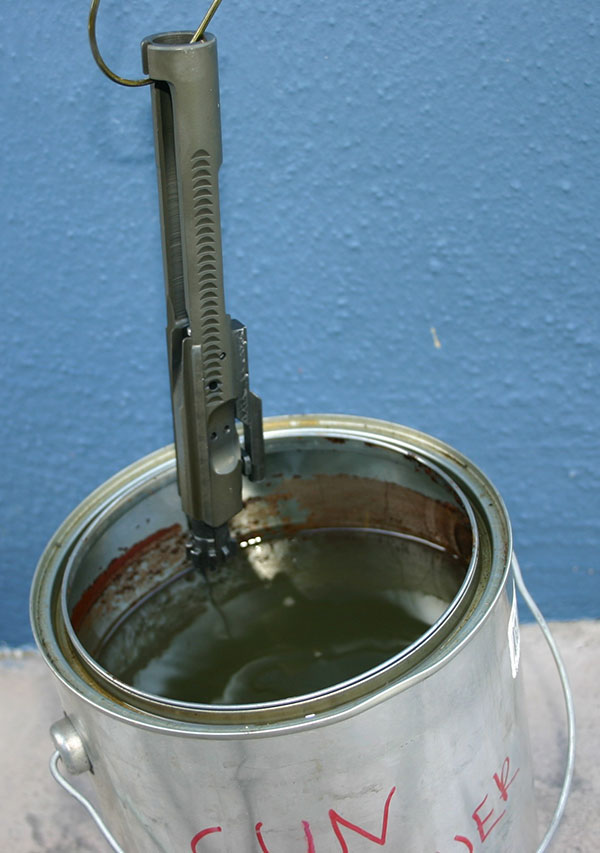
This involves using a solvent like Hoppes #9 to clean all the moving parts, followed by a wiping down with a clean cotton cloth and lubrication on the moving parts. As the scent of Hoppes wafts through your house, you’ll dream of hunting seasons past and simpler times. All joking aside, any basic solvent will do.
Here’s the hard part for the perfectionist types. The weapon will appear slightly dirty! It will be completely functional, but the lubricant will take on an ever-so-slight gray tinge as a minor amount of carbon mixes with it. This is okay! You can deal with this!
Now put the gun away, stop thinking about it, and go organize your sock drawer to help distract you from the very slightly dirty weapon sitting in your gun safe.
THE WIPE DOWN
If “the traditional” is too much for you perfectionists to bear, you’ll really hate the wipe down, which involves breaking a weapon down only to its major components. For a handgun, this would be separating the slide from the frame and popping out the barrel. You wipe it down, hit it with a little lubricant, reassemble it, and put it away.
This is a stop-gap measure to keep the gun up and running between more thorough cleanings. Same as with the traditional, the wipe down will not pass the white-glove test. As an aside, if you are consistently using a white glove to inspect your firearms, you may want to seek professional treatment in the form of a 12-step program or hypnotherapy.
THE DECOPPERNATOR
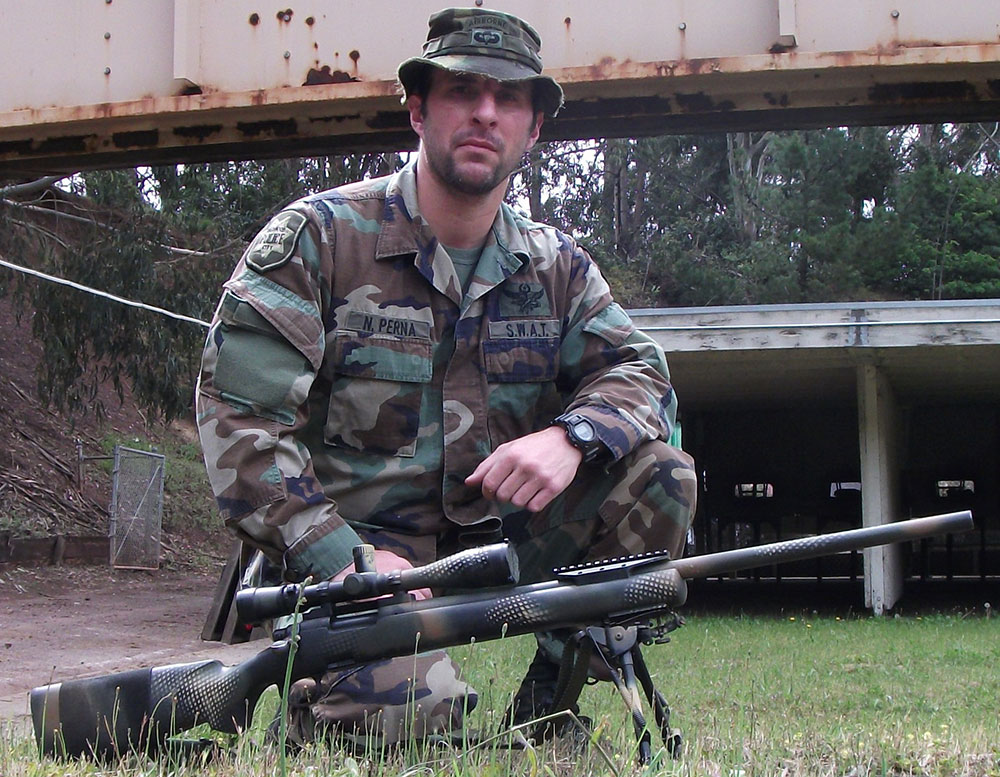
You can scrub a gun until the cows come home, but you’ll never completely get out the fouling caused by metal buildup in barrels and chambers if you don’t use bore cleaner. This is especially prevalent in the grooves of the barrel (the cut-out portion of the rifling in rifles). The buildup comes from material the bullet leaves behind as it passes through the barrel. It’s less common in pistols because the grooves are not as pronounced.
I use Shooter’s Choice to clean it. I put some on a wire brush first to make sure all the affected parts are contacted. Then I apply bore cleaner to a patch and repeat the process. You’ll know you’re doing it right if it comes out black with some green on it from copper residue. I found it necessary to do this with my sniper rifle at work about every fourth or fifth cleaning. Like the car’s air filter, it doesn’t need to be done every time.
Don’t let weapons maintenance impact your psychological well-being, and don’t over-clean your guns. Be smart about it and clean what needs to be cleaned.
Oh yeah, and change your air filter only when it’s really dirty.




